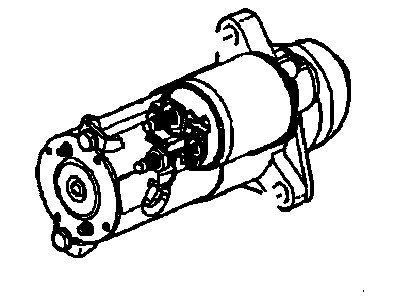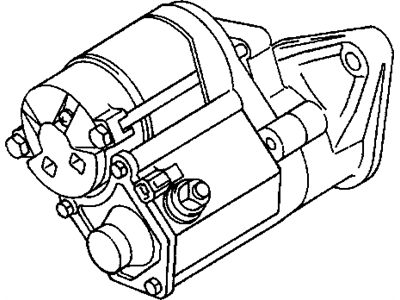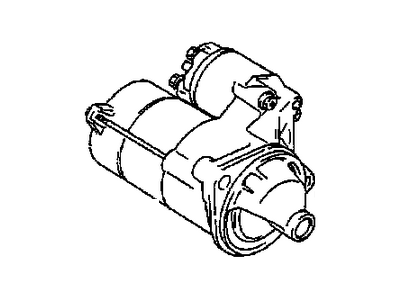
My Garage
My Account
Cart
Genuine 1991 Chevrolet Metro Starter
Starter Ignition- Select Vehicle by Model
- Select Vehicle by VIN
Select Vehicle by Model
orMake
Model
Year
Select Vehicle by VIN
For the most accurate results, select vehicle by your VIN (Vehicle Identification Number).
3 Starters found
- Product Specifications
- Other Name: STARTER, Starter Motor; Starter
- Item Weight: 10.20 Pounds
- Item Dimensions: 9.4 x 6.3 x 5.9 inches
- Condition: New
- Fitment Type: Direct Replacement
- SKU: 30005226
- Warranty: This genuine part is guaranteed by GM's factory warranty.
- Product Specifications
- Other Name: STARTER, Starter Motor; Starter
- Item Weight: 8.30 Pounds
- Item Dimensions: 8.3 x 6.5 x 4.8 inches
- Condition: New
- Fitment Type: Direct Replacement
- SKU: 30005925
- Warranty: This genuine part is guaranteed by GM's factory warranty.
- Product Specifications
- Other Name: STARTER, Starter Motor
- Replaces: 96062790, 96062498, 96051950
- Item Weight: 7.40 Pounds
- Item Dimensions: 10.0 x 6.7 x 5.9 inches
- Condition: New
- Fitment Type: Direct Replacement
- SKU: 91175987
- Warranty: This genuine part is guaranteed by GM's factory warranty.
1991 Chevrolet Metro Starter
We are your prime source for competitively priced and high-quality OEM 1991 Chevrolet Metro Starter. We provide you with parts that will allow you to save a lot of money without sacrificing quality. All our OEM parts are backed by the manufacturer's warranty and shipped out at a swift rate.
1991 Chevrolet Metro Starter Parts Questions & Experts Answers
- Q: What steps should be taken before diagnosing starter problems on 1991 Chevrolet Metro?A: Before diagnosing starter problems, ensure the battery is fully charged. If the starter does not turn when the switch is operated, check that the shift lever is in Neutral or Park for automatic transaxles or that the clutch pedal is depressed for manual transaxles. Verify that the battery is charged and that all cables at the battery and starter solenoid terminals are clean and secure. If the starter spins but the engine does not crank, the overrunning clutch in the starter is slipping, necessitating replacement of the starter. If the starter does not operate at all but the solenoid clicks when the switch is actuated, the issue may be with the battery, the main solenoid contacts, or the starter itself, or the engine may be seized. If the solenoid plunger is not audible when the switch is actuated, the battery may be bad, the fusible link could be burned, or the solenoid might be defective. To check the solenoid, connect a jumper lead between the battery positive and the ignition switch wire terminal on the solenoid; if the starter operates, the solenoid is functioning, indicating a problem with the ignition switch, neutral start switch, or wiring. If the starter still does not operate, remove the starter/solenoid assembly for disassembly, testing, and repair. If the starter cranks the engine slowly, ensure the battery is fully charged and that all terminal connections are tight; a partially seized engine or incorrect oil viscosity in cold weather can also cause slow cranking. Additionally, verify the battery's Cold Cranking Amp rating is adequate for the engine. Run the engine until it reaches normal operating temperature, then disconnect the coil wire from the distributor cap and ground it on the engine. Connect a voltmeter positive lead to the positive battery post and the negative lead to the negative post; a fully charged battery should read about 12.6 volts. If the reading is lower, charge the battery before proceeding. Crank the engine and take voltmeter readings as soon as a steady figure is indicated, avoiding more than 15 seconds of starter operation at a time. A reading of 9 volts or more with normal cranking speed is acceptable; if the reading is 9 volts or more but cranking speed is slow, the solenoid contacts may be burned, there could be a bad connection, or the starter may be faulty. If the reading is less than 9 volts and cranking speed is slow, the starter is likely bad or the battery is discharged.











